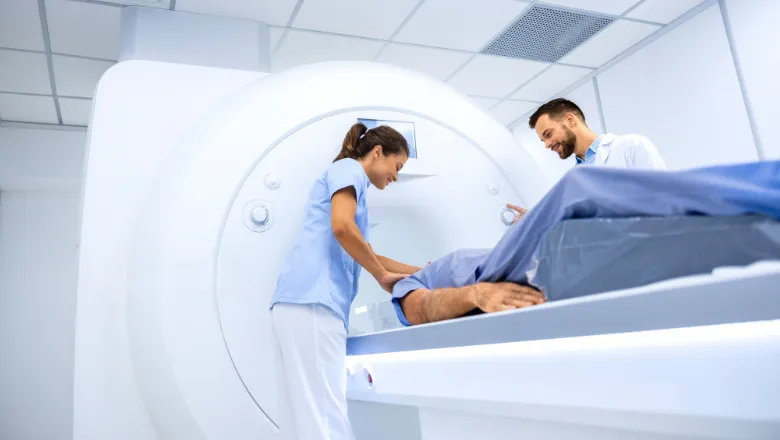Three times stronger than current iron-based superconducting magnets, this development could make MRI machines smaller and cheaper than ever before.
Scientists have developed the world’s strongest iron-based superconducting magnet using AI, in what could be a breakthrough for affordable MRI machines and the future of electrified transport.
Superconducting magnets are capable of producing very strong, stable magnetic fields without the need for large amounts of power. This means they can be used in a range of technologies including MRI machines that require a strong magnetic field to produce clear 3D images of soft tissue. They can also be used in the next generation of transport, including the SCMaglev train system in Japan.
However, the superconductors currently used are primarily in the form of large coils of superconducting niobium-tin alloy wire. Devices using them need to accommodate this size, which can limit their application.
In a paper published in NPG Asia Materials today, researchers from King’s College London and Japan have fabricated a cheap and powerful iron-based superconducting magnet using machine learning (ML), paving the way for widespread and affordable use of the technology.
Dr Mark Ainslie from the King’s Department of Engineering has collaborated on this work with researchers from Tokyo University of Agriculture and Technology, the Japan Science and Technology Agency, the National Institute for Materials Science and Kyushu University.
“Using artificial intelligence (AI), we’ve produced a cost-effective and scalable alternative using iron, which is a lot easier to work with and opens the door for smaller and lighter weight devices.”
Dr Mark Ainslie – Lecturer in Engineering
Dr Mark Ainslie said: “Superconducting magnets are the backbone of the future. Not only are they used to image cancers with MRI machines, but they will be vital for electric aircraft and nuclear fusion. However, the materials and technology required to create traditional copper-based wire superconductors are typically expensive, which has resulted in limited market penetration. Using them in bulk form, as a magnet that doesn’t lose its magnetism once magnetised, can result in a smaller footprint in comparison to heavier coils of wire, but copper-based bulk superconductors can take weeks to fabricate.
“Using artificial intelligence (AI), we’ve produced a cost-effective and scalable alternative using iron, which is a lot easier to work with and opens the door for smaller and lighter weight devices. The first iron-based superconductors were made over ten years ago, but the magnetic fields they produced were nowhere near strong or stable enough for widespread use.
“While superconducting magnets still need to be cooled to very low temperatures to function effectively, our process lays the groundwork for manufacturers to make them at speed and powerful enough for industrial applications – meaning more MRI machines for cheaper. By reducing the need for large amounts of superconducting wire in MRI machines, we can also create a new generation of smaller units that could be deployed at a GP’s office, rather than requiring large rooms in hospitals, widening accessibility.”
“By reducing the need for large amounts of superconducting wire in MRI machines, we can also create a new generation of smaller units that could be deployed at a GP’s office.”
Dr Mark Ainslie – Lecturer in Engineering
MRI machines have strict requirements for the strength and stability of the magnetic field their magnets produce, to ensure patient safety and image quality. The researchers’ prototype is the first iron-based bulk superconductor that meets these requirements.
Using a new machine learning system called BOXVIA, the scientists developed a framework that could optimise superconductor creation in the lab faster than ever before.
Trained on researchers’ attempts to improve the superconductive properties of magnets by shifting parameters like heat and time in the fabrication process, BOXVIA spots patterns that improve performance and fine-tunes parameter changes to come up with the most optimal design. Ordinarily, it would take researchers months to create each magnet and test its properties to optimise it for different scenarios, but this new software shortens the time drastically.
The researchers also found that superconducting magnets developed with this ML system had a different structure at a microscopic level than those produced without BOXVIA, with larger iron-based crystals within the magnet structure.
The structure of the samples produced by AI was different to high-performing samples created by humans. These samples had a wide range of sizes of iron-based crystals, opposed to the uniform structure that human researchers have traditionally favoured.
For the team, the next challenge is to connect how this never-before-seen nanostructure contributes to superior superconducting properties, which will lead to even more powerful magnets in the future.

